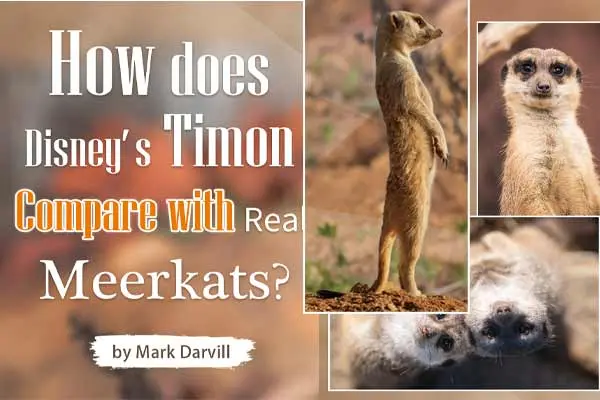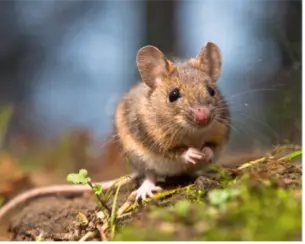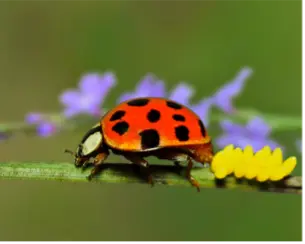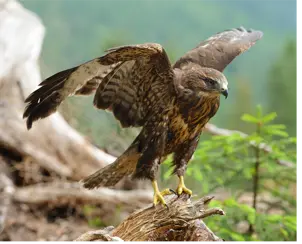
《獅子王》中 丁滿的真實化身 ―― 狐獴 How does Disney’s Timon Compare with Real Meerkats? 【本篇為全程英文講解】
How does Disney’s Timon Compare with Real Meerkats?
7/7 解析英語
• 作者 Mark Darvill
• 閱讀時間 7分鐘
聽本圖文出處:
https://www.ivy.com.tw/newsLetter/analysis_cont/2023032215454739990
MP3:
狐獴聰明且忠誠,牠們與迪士尼經典之作當中所描繪的狐獴相去不遠
目錄 /
Tips & Analysis
/
More to Learn
/
中文翻譯(& 答案)
閱讀測驗
Anyone who has seen Disney’s The Lion King will agree that one of the movie’s most popular characters is Timon. Timon, along with his best friend Pumbaa, provides Simba, the movie’s protagonist, with what he needs the most when they first encounter him—kindness and loyalty.
While millions of young children have viewed this classic movie, many of them might not be aware that Timon is actually
a real-life meerkat, a small mammal native to the desert lands of southern Africa. Meerkats have a unique and adorable appearance primarily characterized by an upright standing posture and dark patches around their eyes. Particularly, it is their standing pose that sets them apart from other mammals, most of which feel more comfortable on four legs.
Despite their cute appearance, meerkats must adopt clever strategies to survive in the harsh desert environment. They are highly cooperative and social animals living in family groups known as “mobs.” Each mob has a dominant female in charge, and the other members of the mob have defined roles to ensure that no task is left undone. Some serve as watchers who look out for dangerous predators in the sky like eagles and hawks, while others hunt for food, including fruits, insects, small birds, rodents, and lizards. Meerkat mobs live in homes called burrows, which are essentially underground tunnel systems that enable groups to keep cool in the scorching African sun.
Intelligent and loyal, meerkats are truly not too far removed from the one depicted in the Disney classic. These fascinating creatures are much more than just cute animals and can surely teach us a thing or two about “standing” up for one another.
1. What is the purpose of the first paragraph?
(A) To outline the personalities of meerkats.
(B) To introduce a Disney classic to the readers.
(C) To set the stage for the discussion of meerkats.
(D) To specify what role Timon plays in Simba’s life.
2. Which of the following aspects of meerkats are mentioned in the passage?
a. mating behavior b. physical features
c. living habitats d. natural enemies
e. stress response f. dietary habits
(A) a, b, c, f
(B) b, c, d, f
(C) a, d, e, f
(D) b, d, e, f
3. According to the passage, which of the following is a meerkat LEAST likely to eat?
(A)

(B)

(C)

(D)

4. What can be inferred about meerkats from the passage?
(A) A male meerkat rules over the whole family.
(B) The division of labor in their mobs is quite clear.
(C) They only switch to standing positions when facing threats.
(D) Timon’s image in the Disney classic is totally different from that in real life.
答案: 1.C 2.B 3.D 4.B
單字片語整理
Words in Use
●
aware
[əˋwɛr]
a. 知道的;察覺的(與介詞 of 並用)
●
harsh
[hɑrʃ]
a. 嚴厲的
●
adorable
[əˋdorəb!]
adj. 可愛的,討人喜歡的
●
patch
[pætʃ]
n. 一小塊(土地、汙漬等);補釘
vt. 修補
●
characterize
[ˋkærəktə͵raɪz]
vt. 描繪……的特性;具有……的特色(常用被動語態)
●
encounter
[ɪnˋkaʊntɚ]
.vt. 遭遇
n. 與……不期而遇(名詞時常與介詞 with 並用)
●
cooperative
[koˋɑpə͵retɪv]
a. 合作的
n. 合作企業
●
dominant
[ˋdɑmənənt]
a. 支配的;重要的(職位)
●
loyalty
[ˋlɔɪəltɪ]
n. 忠誠,忠實
●
depict
[dɪˋpɪkt]
vt. 描述,描繪
●
habitat
[ˋhæbə͵tæt]
n. (動物) 棲息地
●
mammal
[ˋmæm!]
n. 哺乳動物
●
predator
[ˋprɛdətɚ]
n. 捕食者,掠食者
●
native
[ˋnetɪv]
n. 本地人;土著
a. 祖國的;本地的,土生的
●
particularly
[pɚˋtɪkjəlɚlɪ]
adv. 特別地;尤其
●
posture
[ˋpɑstʃɚ]
n. . 姿勢;立場,態度
vi. 裝模作樣
●
upright
[ˋʌp͵raɪt]
adv. 垂直地,直立地
a. . 垂直的,直立的;正直的
n. 立柱;直立式鋼琴(= upright piano)
●
protagonist
[proˋtægənɪst]
n. 主角
●
defined
[dɪˋfaɪnd]
a. 清楚的,清晰的
●
scorching
[ˋskɔrtʃɪŋ]
a. 酷熱的
Practical Phrases
●
compare with / to...
比較……
Compared with my plain boxed meal, Becky’s seemed like a great delicacy.
和我很普通的便當相比,貝琪的便當看起來是山珍海味。
●
be native to + 地方
是某地所獨有的
This kind of bird is native to that island.
這種鳥是該島所獨有的。
●
serve as...
作為⋯⋯之用
This book can serve as a guide to help you learn to cook.
這本書可作為幫助你學習烹調的指南。
●
be aware + that 子句
知道/注意到⋯⋯
You must be aware that a blood donation can save someone else’s life.
你一定知道捐血可以救人一命。
●
look out for
注意/留心⋯⋯
You really need to look out for cars when you cross the street.
過馬路時務必要注意來車。
●
in charge
掌管;負責
●
be far removed from
與⋯⋯相去甚遠
The luxury of my brother’s mansion is far removed from my old small apartment.
我哥哥豪宅的奢華與我又舊又小的公寓相去甚遠。
●
a thing or two
一些事情
Tips & Analysis
Particularly, it is their standing pose that sets them apart from most other mammals, most of which feel more comfortable on four legs.
介紹關係代名詞與數量詞之間的關係
※ 本句使用「主要子句 + 逗點 + 數量詞 + of + 關係代名 詞(whom / which)引導的形容詞子句」的句構。在 寫作時,學生往往會誤用受格 them 而造成兩句沒有 連接詞連接的錯誤句構。
• Joseph has three sons, one of them is a doctor. (X)
→ Joseph has three sons, one of whom is a doctor. (O)
約瑟夫有三個兒子,其中一位是醫生。
• Jessica has a large collection of books, most of them are romance novels. (X)
→ Jessica has a large collection of books, most of which are romance novels. (O)
潔西卡收藏了大量的書籍,其中絕大部分是愛情小說。
※ 本句構兩句中間以逗號相隔,因此須用關係代名詞 whom(代替人)或者是 which(代替物)來代替先 行詞,而不可用 that。
• Susan has many friends, some of that like spicy food. (X)
→ Susan has many friends, some of whom like spicy food. (O)
蘇珊有很多朋友,其中一些喜歡吃辣。
※ of whom 或 of which 之前除了數量詞(one、few、 some、many、most、all、neither、a lot of 等) 外,還可以用 the former、the latter 以及“the + 最 高級”。
• Nancy made some doughnuts, the most delicious of which I think is the lemon one.
南西做了一些甜甜圈,我認為最好吃的是檸檬口味的。
* I think 為形容詞子句中的插入語。
________________________________________
精選試題
The author published three books this year, two of _____ are ranked on the bestseller list.
(A) that
(B) what
(C) which
(D) whom
答案:C
More to Learn
stand up for... 支持⋯⋯,為⋯⋯挺身而出
• Helen stood up for Julia’s proposal at the meeting.
海倫在會議中支持茱莉亞的提案。
________________________________________
以下介紹 stand 的其他片語及用法:
a. stand up to... 對抗⋯⋯;經得起⋯⋯
• Larry is brave enough to stand up to all the bullies at his school.
賴瑞夠勇敢,能站出來對抗學校裡的所有霸凌者。
• Tom’s coach wondered if he could stand up to the challenge of doing 200 pushups.
湯姆的教練想知道他是否能夠經得起做兩百個伏地 挺身的挑戰。
b. stand sb up / stand up sb 放某人鴿子
• Mina was not sure if Jack stood her up or if he was just late.
米娜不確定傑克是放她鴿子還是只是遲到了。
c. stand by sb 支持/幫助某人
• Paul promised me that he would stand by me no matter what happened.
保羅向我保證,無論發生什麼事,他都會支持我。
d. stand out (from...)
(從⋯⋯)脫穎而出,(在⋯⋯中)很顯眼
• Many applicants for the position were good, but Ed stood out from the rest.
許多申請該職位的人都很優秀,但艾德特別出眾。
e. stand down 退職,離職;下臺
• Abby decided to stand down after 30 years as CEO.
艾比在擔任執行長三十年後決定退職。
中文翻譯(& 答案)
任何看過迪士尼《獅子王》的人都會贊同這部電影中最受歡迎的其中一個角色就是丁滿。丁滿和牠最好的朋友彭彭在牠們初次遇見主角辛巴時,為牠提供牠最需要的東西 ── 善良和忠誠。
雖然已有數百萬名幼童看過這部經典電影,但他們當中有許多人可能並不知道丁滿其實就是現實世界中的狐獴,狐獴是一種 原生於非洲南部沙漠地區的小型哺乳動物。狐獴有著獨特而可愛的外表,主要的特徵是直立的站姿和眼睛周圍的黑色斑塊。尤其 是牠們的站立姿勢使牠們有別於其他哺乳動物,大多數的哺乳動物用四隻腳行動比較輕鬆自在。
儘管牠們的外表可愛,但狐獴必須採取巧妙的策略才能在惡劣的沙漠環境中生存。牠們是合作性高且社會化的動物,生活 在被稱為 “mob”(編按:mob 通常是指一個群體且帶有負面涵意,像是一群暴民或流氓,而在此是指狐獴群體)的家族群體之 中。每個狐獴群體都有一隻主導的母狐獴負責發號施令,而狐獴群體中的其他成員都有明確的角色以確保不會有任務未被完成。 有些成員擔任看守者,注意天空中如雕和鷹等危險獵食者,而其他成員則尋找食物,包括水果、昆蟲、小鳥、囓齒動物和蜥蜴。 狐獴群體生活在稱為 “burrow”(編按:此指狐獴所挖的洞穴、地道)的家中,這些洞穴基本上是地下隧道系統,使狐獴群體在 炎熱的非洲陽光下保持涼爽。
狐獴聰明且忠誠,牠們與迪士尼經典之作當中所描繪的狐獴相去不遠。這些迷人的生物不僅僅是可愛的動物,牠們肯定還會 教我們一些關於「站起來」支持彼此的事情。
1. 第一段的目的為何?
(A) 概述狐獴的性格。
(B) 向讀者介紹一部迪士尼經典作品。
(C) 為狐獴的討論做鋪陳。
(D) 詳細說明丁滿在辛巴的生命中扮演什麼角色。
2. 文章中提到了下列關於狐獴的哪些方面?
a. 求偶行為 b. 身體特徵 c. 生活棲息地
d. 天敵 e. 對壓力的反應 f. 飲食習慣
(A) a, b, c, f
(B) b, c, d, f
(C) a, d, e, f
(D) b, d, e, f
3. 根據本文,狐獴最不可能吃下列何者?
題解: 第三段提到狐獴的食物包括水果、昆蟲及囓齒動物等,而雕和鷹類則為其獵食者,故答案選 (D)。
4.從本文中可以推斷出關於狐獴的什麼事?
(A) 一隻雄性狐獴統治整個家庭。
(B) 牠們群體當中的分工很清楚。
(C) 牠們只有在面臨威脅時才會轉換成站立姿勢。
(D) 丁滿在迪士尼經典作品中的形象與現實生活中的 狐獴大相逕庭。